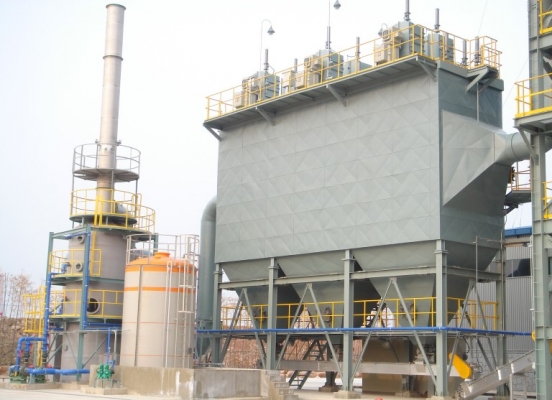Introduction
A recent study predicts that the utilization of conventional fuels for power production rises in two decades. The combustion of these fuels releases the most harmful gases, and sulfur compounds into the atmosphere. We all know that many harmful particulates are coming out from several industrial sectors such as coal-based thermal power plants, sintering plants, cement kilns, etc. Relying upon the nature of coal, the plenty of minute particles exhaust out after the combustion process: like aluminum oxide, ferric oxide, Silicon dioxide. So for controlling particulate emission, many traditional cleaning appliances are in practice such as bag filters, cyclones, scrubbers, bed filters. But. one of the efficacious methods of controlling the emission of these particulates is using ESP.
Working Principle
The working principle of a precipitator is divided into three fundamental steps. Electric charging of the suspended particles A high tension rectifier impresses a D.C Voltage of 30-70KV between the discharge electrodes and the collecting electrodes, depending on the nature of the process and the design of the precipitator. The discharge electrodes emit ions for the electric charging of the dust particles. Collection of the charged particles in an electric field under the influence of a strong electric field charged dust particles migrate towards the collecting electrodes. Removal of the precipitated dust When a certain amount of dust has accumulated on the surface of the collecting electrodes, it is made to fall into the bottom hopper of the precipitator and is extracted.
Advantages:
- Less maintenance
- Helps in protecting the environment
- Efficiency is high, up to 99.9%
- Works well as compared to other separators
- Easy to operate and highly reliable
- Large dust particles can be easily eliminated
Applications:
- The most common application of an Electrostatic precipitator is an industrial application for a smoke.
- The dry electrostatic precipitators are used for collecting dry particles like cement, ash, etc.
- The wet electrostatic precipitators are used for removing the wet particles like oil, tar, resin, acid, etc.
- Electrostatic Precipitators are used in machine shops and chemical plants for removing oil mists and acid mists.
- These are used to clean the blast or metallurgical heating system gases
- Used to remove the bacteria & fungus in the medical field.
- Used in air conditioning systems for sanitizing air Used to recover the materials in the flow of gas.
- ESPs are used in zirconium sand for detaching the rutile in plants like dry mills.
Conclusion
We can conclude that an ESP is a device that plays a crucial role in the process of dust elimination before they are exposed to the environment. The problem of air pollution from particulate emission has recently shifted from micro to the nano range. Continuous research and development in the field of emission control have to lead the ESPs to be the most economical and efficient way to control different types of emissions with tremendously high efficiencies. Despite its high capital investment ESP is the necessity of the present and hope for the future.
To know more, please check Enviropol.

